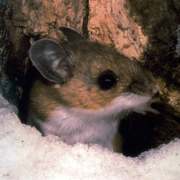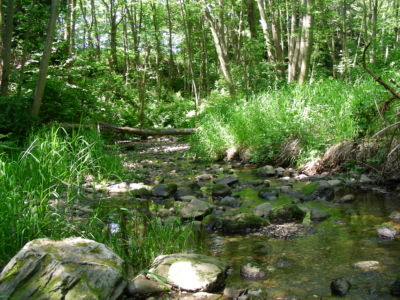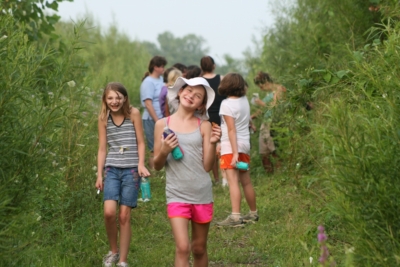SDGs and Biodiversity – The Private Sector Impact
On a truly sustainable planet, biodiversity must thrive, populations of wildlife must not decline and extinctions must not increase beyond the natural background rate. On a truly sustainable planet, resources must be used to secure all the plants and animals that are part of life, not just those that perform functions relative to human life. All participants on the planet have the means and influence to create conservation impact, with the private sector particularly well placed to leverage their resources and expertise to restore ecosystems to health and enhance and protect biodiversity.
When the UN Sustainable Development Goals (SDGs) were adopted last year, two goals out of the 17 related directly to protecting biodiversity. SDG 14 looks at Life Below Water and SDG 15 looks at Life on Land. SDG 15, the focus of this post, is to ”protect, restore and promote sustainable use of terrestrial ecosystems, sustainably manage forests, combat desertification, and halt and reverse land degradation and halt biodiversity loss [sic].” The SDGs are driven by a vision of peace and prosperity for all humanity, so it’s not surprising nor materially negative that SDG 15 is focused on the ”use” potential of natural resources rather than their intrinsic value. This focus on “use” has its dangers as a recent comprehensive study of threats to biodiversity by IUCN, published in the journal Nature, clearly shows that over-exploitation and agriculture have the greatest current impact on biodiversity.
However, the inclusion of biodiversity in the SDGs is a new recognition of the importance of nature to quality of life and that healthy and sustainable human development cannot be achieved without natural resource management that prioritizes sustainability instead of unconsidered consumption.
Within each goal lies a set of targets. SDG 15 target 5 urges “urgent and significant action to reduce the degradation of natural habitats, halt the loss of biodiversity and, by 2020, protect and prevent the extinction of threatened species.” Other targets within SDG 15 address specifics of biodiversity loss like invasive species, land degradation and illegal trade in wildlife, while others present opportunities for positive action, including integrating biodiversity better into local planning and development processes and mobilizing financial resources to address biodiversity loss.
A major change from the Millennium Development Goals (MDGs), the precursor to the SDGs, is the recognition of the interrelated nature of the issues facing this planet that require integrated solutions. This recognition is obvious in the crosscutting elements across the 17 goals and 169 targets.
To visualize these connections, PYXERA Global created a graphic, which illustrates the crosscutting elements and consolidates the goals into four focus areas, demonstrating the overlap among the various goals and illustrating their interdependent nature.
Another change from the MDGs is the recognition that government alone cannot create the sustainable future we need. Government needs to be joined by civic society groups and business. Tri-sector partnerships are required to meet these goals. The UN has established the Business for 2030 initiative to encourage and recognize private sector involvement in the goals.
Both of these changes ― the recognition of interconnectivity and the embrace of business as a critical player in achieving these goals ― provide an opportunity for business to use the SDGs as a framework for CSR and sustainability initiatives, whether focused internally on operations or externally on community and external stakeholders. SDG 15 is an obvious starting point.
Private sector efforts in natural resource conservation are an essential contribution to SDG 15, and can also contribute to the other goals clustered in the Human and Natural Environment focus area shown in the PYXERA Global illustration above. Investments in conservation that are focused on species recovery or habitat restoration can increase overall ecosystem health which can, in turn, increase health and resiliency in cities and human settlements (SDG 11). Efforts to manage lands with nature-friendly practices and to incorporate conservation practices on legacy lands, into existing operations and into future capital projects can address SDG 9 ― building resilience into existing infrastructure and sustainability into industrialization.
The UN declaration that established these goals is ambitious. In the declaration, the parties “resolve, between now and 2030, to end poverty and hunger everywhere; to combat inequalities within and among countries; to build peaceful, just and inclusive societies; to protect human rights and promote gender equality and the empowerment of women and girls; and to ensure the lasting protection of the planet and its natural resources.” The declaration is framed as a collective journey in which there are roles and responsibilities for all.
Every business has an impact on land, ecosystems and habitats. Some sectors, like the extractive industry sector, have a direct and visible impact, while others, like the manufacturing sector, have an indirect and less visible impact, with the services sector even further removed from direct impact. Across industry sectors, different businesses have different impacts on biodiversity, but all business has an impact. It is this commonality that should impel all businesses, not just those with direct impacts, to consider their lands, their communities and their opportunities to make a difference in this arena and adopt SDG 15 and associated goals as their own.









